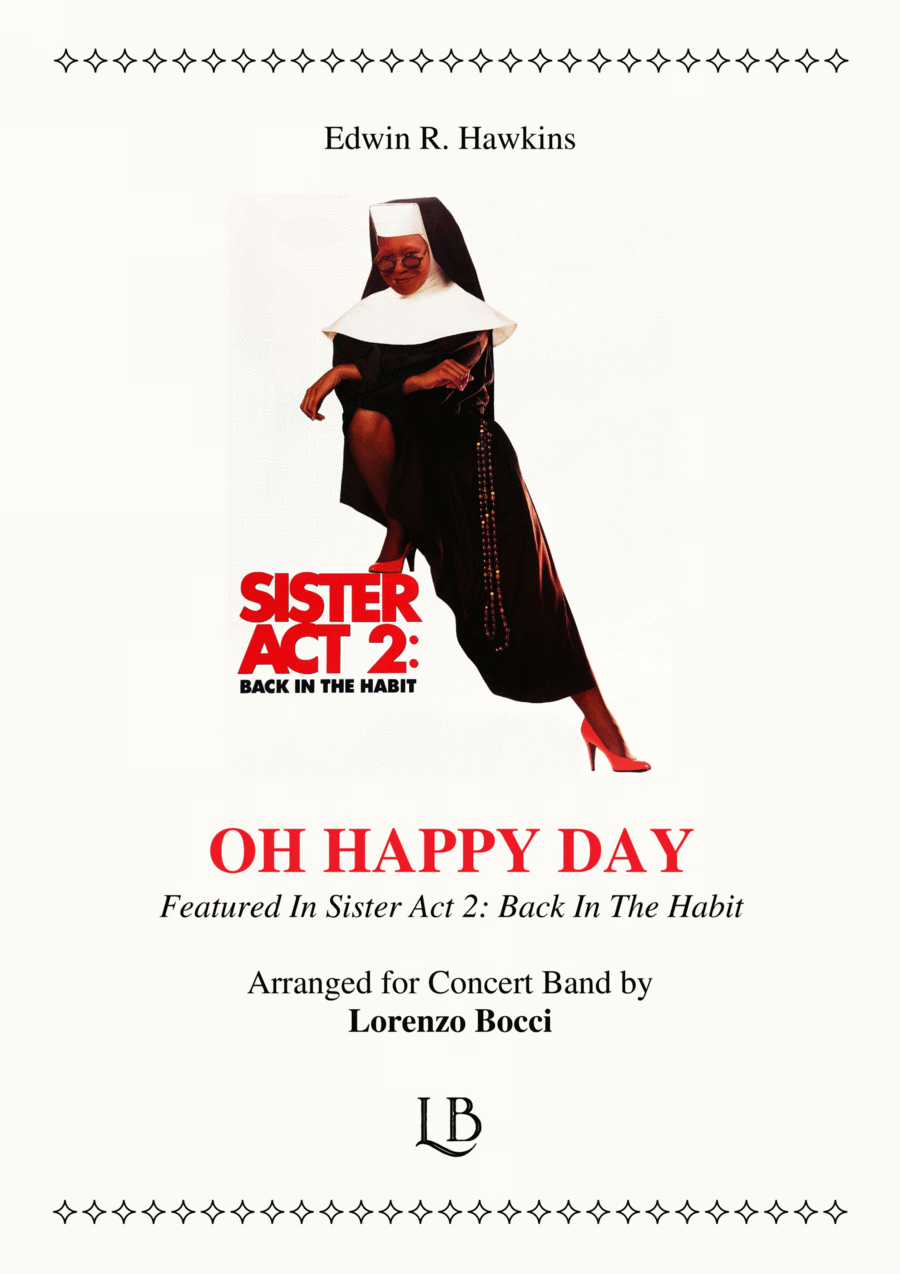Concert Band - Level 3 - Digital Download SKU: A0.1381027 Composed by Edwin Hawkins. Arranged by Lorenzo Bocci. Broadway,Contemporary,Easter,Film/TV,Musical/Show,Pop. 87 pages. Lorenzo Bocci #965733. Published by Lorenzo Bocci (A0.1381027). OH HAPPY DAY Featured In Sister Act 2: Back In The Habitfor Concert Band (with Fanfare Band parts) - Grade 3 - Digital Download Composed by Edwin R. Hawkins. Arranged by Lorenzo Bocci. Gospel/Film/TV/Musical. Concert Band - Blasorchester - Harmonie. Score and parts. With Fanfare Band parts. Duration 4'00''. Published by Lorenzo Bocci.Instrumentation:Full Score, Flute 1,2, Oboe, Bassoon, Eb Clarinet, Bb Clarinet 1, 2, 3, Bb Bass Clarinet, Eb Alto Saxophone 1, 2, Bb Tenor Saxophone, Eb Baritone Saxophone, Bb Trumpet 1, 2, 3, F Horn 1, 2, 3, 4, Trombone 1, 2, Bass Trombone, Euphonium, Bass, Electric Bass, Drum Set, Percussion 1 (Cowbell, Tambourine), Percussion 2 (Congas), Piano, Electric Guitar (Opt.). Additional Parts:Bb Soprano Saxophone (Concert Band, Fanfare Band), Eb Horn 1, 2, 3, 4, Bb Trombone 1, 2 T.C., B.C., Bb Bass Trombone T.C., B.C., Bb Euphonium T.C., B.C., Bb Bass T.C., B.C., Eb Bass T.C., B.C.Fanfare Band Parts:Eb Cornet, Bb Flugelhorn 1, 2, 3.Oh Happy Day is a 1967 gospel music arrangement of the 1755 hymn by clergyman Philip Doddridge. Recorded by the Edwin Hawkins Singers, it became an international hit in 1969. It has since become a gospel music standard, selling over 7 million copies worldwide, making it the second best-selling gospel song of all time. The song has appeared in American musical comedy film Whoopi Goldberg's Sister Act 2 in 1993, with then 14-year-old Ryan Toby singing lead.Subscribe to my YouTube Channel to stay updated on new releases.
